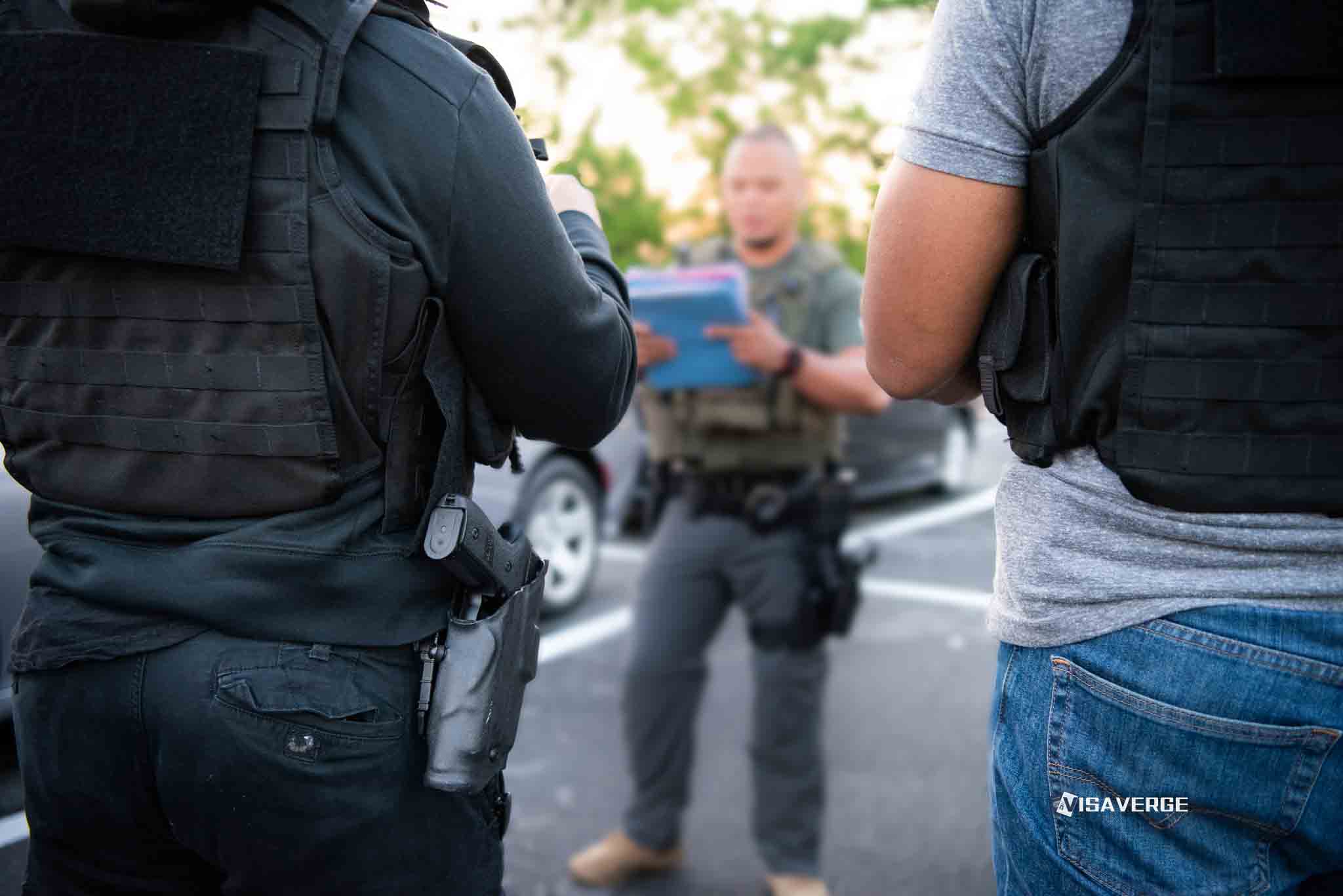U.S. Immigration and Customs Enforcement said it deported former Cuban judge Melody González Pedraza to Havana on September 25, 2025, ending a 484-day period in ICE detention that followed the denial of her political asylum claim. According to case records cited by advocates, González entered the United States in May 2024 seeking humanitarian parole, but officials refused her entry soon after arrival, citing her documented history on the bench in Cuba, where she issued harsh sentences against young government opponents.
Immigration authorities determined González did not qualify as a refugee or asylee because she had served as a functionary of the Cuban state’s repressive system. U.S. officials found that her record as a municipal court judge, and her membership in the Communist Party, placed her on the wrong side of U.S. protection laws designed for people fleeing persecution rather than those accused of helping carry it out. An immigration judge ordered her deportation in June 2025, and ICE carried out the removal in late September after final processing.

Case details and evidentiary basis
González’s judicial record—widely criticized by rights groups—included sentencing four young Cubans to three and four years in prison in a case that relied on confessions described as coerced. The Foundation for Human Rights in Cuba had listed her on its “list of repressors,” a designation that triggered scrutiny when she reached U.S. soil.
Documentation from Cuban civil society groups, presented to U.S. authorities, became central to the finding that she was not a victim but a former official implicated in abuses. Advocates said this evidence helped frame the narrative for decision-makers, who must assess both credibility and statutory bars to relief in cases involving alleged participation in repression.
Legal framework and procedural safeguards
ICE said the removal followed standard procedures under Title 8 of U.S. immigration law, which governs the processing and deportation of people who lack a lawful basis to remain. These procedures include safeguards meant to prevent refoulement—returning someone to a country where they would face persecution or torture.
- U.S. officers concluded González did not face such a risk upon return to Cuba.
- Officials found no form of relief (asylum, withholding, or CAT protection) applied in her case.
- ICE transported her back to Havana, consistent with the agency’s broader policy of removing noncitizens with final orders.
The case shows how U.S. adjudicators weigh human rights documentation against an asylum claim filed by a former government official. Legal scholars note that U.S. asylum law includes multiple bars for those who assisted persecution or committed serious nonpolitical crimes, even if they later fall out with their government.
Timeline
- May 2024: González arrives under humanitarian parole but is refused entry due to her record as a Cuban judge, including alleged arbitrary sentences against dissidents.
- June 2025: An immigration judge issues a removal order after finding she is ineligible for asylum or other relief.
- September 25, 2025: González is deported to Cuba after 484 days in ICE custody.
The U.S. resumed removal processing for Cuban nationals with final orders in April 2024, applying consistent procedures regardless of nationality. ICE says that policy includes case-by-case review to ensure no one is returned to persecution. For official policy details, readers can consult ICE’s resource on removal operations at ICE removal operations.
Non-refoulement, withholding, and CAT considerations
Her case also illustrates how U.S. officers apply the non-refoulement standard:
- Safeguards require screening for fear of harm.
- Where an applicant is found to have assisted persecution or been part of a regime’s repressive apparatus, asylum is barred.
- Authorities can still consider withholding of removal or protection under the Convention Against Torture (CAT), but only if strict standards are met.
In the materials reviewed by rights groups and immigration officials, those standards were found unmet in González’s case.
Key takeaway: documentation of past participation in repression can be decisive in blocking asylum and related protections, even when an applicant later seeks refuge.
Reactions and broader impact
The deportation drew swift approval across the Cuban exile community in the United States. Former political prisoners, activists, and families of those convicted in Cuba described the removal as a measure of accountability they have long sought. Many portrayed it as a clear signal that former officials who issued or upheld abusive sentences will not find a safe harbor in the U.S.
Inside Cuba, González’s future remains unclear:
- Some observers speculate she could face internal party discipline or quiet reassignment because of statements she reportedly made about the Cuban judicial system while in the United States.
- Others believe her established ties to the Communist Party may shield her.
- As of September 30, 2025, there is no public indication Cuban authorities have taken immediate legal action against her.
That uncertainty underscores a broader pattern: former officials who fall out with the system often navigate opaque processes on return, with varied and rarely transparent outcomes.
Human rights advocates say the deportation sends a message beyond this single case. Records compiled by groups like the Foundation for Human Rights in Cuba have long documented judges, prosecutors, and security agents tied to political trials, long pretrial detention, and convictions based on weak or coerced evidence. Experts argue the González case shows such documentation can shape real outcomes when former officials seek refuge abroad.
According to VisaVerge.com reports, attorneys expect more cases in which U.S. adjudicators weigh these records against requests for humanitarian protection.
Policy context and legal limits
Policy analysts note the case aligns with a broader enforcement posture: remove noncitizens without lawful status and deny immigration benefits to those who meet statutory bars. While controversial—especially when applied to individuals who later renounce their roles—the law draws a hard line on participation in persecution.
- U.S. immigration courts decide status, relief, and statutory bars under U.S. law; they do not conduct criminal trials.
- A removal is an administrative outcome—not a criminal conviction nor an acquittal—based on eligibility.
- Nonetheless, such rulings carry strong symbolic weight for communities seeking accountability.
For families affected by González’s rulings, the removal felt personal. Some of the youths she sentenced conveyed through advocates the trauma of lost years and stalled careers. For many in exile, the deportation suggests continued scrutiny of not only high-profile security officials but also judicial actors whose decisions enabled broader crackdowns.
Guidance for applicants and practitioners
Attorneys remind applicants that:
- Claims of fear must be backed by credible evidence.
- Statutory bars may still block relief.
- In cases involving former officials, adjudicators will examine:
- the applicant’s role,
- the nature of the acts, and
- whether any defenses apply.
The González case shows that detailed records from civil society can be decisive—either supporting an applicant’s fear claims or showing disqualifying participation in repression.
For official guidance on removal procedures, ICE provides public resources on process, custody, and returns at ICE removal operations.
This Article in a Nutshell
ICE deported former Cuban municipal judge Melody González Pedraza to Havana on September 25, 2025, ending 484 days in detention after U.S. authorities denied her asylum and related protections. González arrived in May 2024 seeking humanitarian parole but was refused entry due to her judicial record and membership in the Communist Party. Evidence from Cuban civil society, including allegations of coerced confessions and multi-year sentences for young dissidents, informed adjudicators who found statutory bars to asylum applied. An immigration judge ordered removal in June 2025; officials concluded she did not face persecution on return and carried out the deportation under Title 8 procedures.












